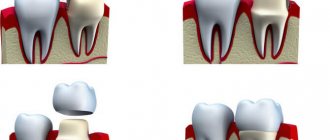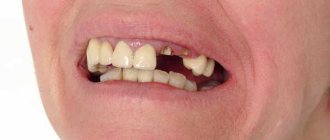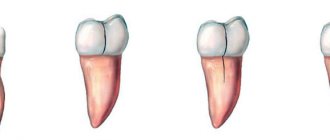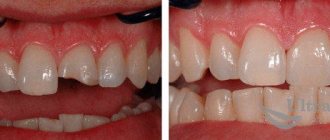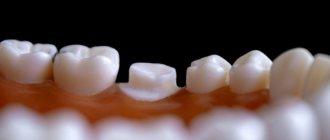Modern dental prosthetics can completely restore the aesthetics of the dentition and its chewing functions. People may face the need for surgical removal at any age. Among the achievements of orthopedic dentistry, anyone can choose a suitable replacement option. Dental prostheses are produced in different types, differing in the material of manufacture, cost, and service life. For the production of structures, alloys of precious metals, ceramics, special plastics, polymers, nylon and other types of raw materials are used.
There are two types of prosthetics after tooth extraction:
- Removable dental structures can be removed and put on by the patient as needed. The products are attached to the supporting teeth using hooks or micro-locks. For edentulous patients, models are used that are fixed to the gums using suction cups or a special gel.
- Fixed dentures are installed in the jaw (implants) or attached to supporting teeth (bridges).
Each category is represented by several options. Among them, dentists select the appropriate solution based on the condition of the oral cavity and the health of the patient.
Depending on the service life of the products, temporary and permanent dentures are distinguished. Models of the first type are designed to last only a few months. The products are used to temporarily close the postoperative gap.
Fixed dentures remain the most popular way to restore the beauty of a smile. This replacement option is more convenient compared to removable devices. It is easy to care for and helps preserve the natural functions of the dental system. Permanent prosthetics are performed in different ways:
- The installation of crowns made of metal ceramics or a metal alloy is performed on a previously prepared tooth. This method is used if the root is intact, but the top is destroyed.
- Implantation of one or more teeth involves inserting an artificial root into the jaw. A permanent or temporary crown is placed on it. This method is indicated for complete or partial edentia. Sometimes doctors use an implant as a support for a bridge.
- Bridges are placed after the amputation of several teeth located nearby.
- Adhesive structures are secured using an adhesive solution. In this case, there is no need to depulp the adjacent teeth. This restoration method is one of the most technologically advanced in orthopedic dentistry.
Prosthetics after tooth extraction and indications for the procedure
Installation of a denture allows you to completely restore the functional and aesthetic properties of the jaw apparatus. The indication for the procedure is single or multiple damage to the jaw as a result of trauma, surgical amputation due to advanced caries, or other diseases of the oral cavity.
If the crown is partially destroyed, a microprosthesis is installed instead of the usual one. This group includes inlays, veneers and ultraneers. The products effectively solve aesthetic problems with minimal trauma to natural bone and gum tissue.
If the front tooth is destroyed, but the root is preserved
In case of significant destruction of the coronal part (up to 50%), the front tooth can be restored using prosthetic crown. The affected tooth is depulped, followed by filling the canals, given the desired shape (prepared), if necessary, the root is strengthened with a stump insert. The crown is fixed onto the prepared stump using dental cement.
For the smile area, it is better to choose all-ceramic or metal-free crowns made of zirconium or aluminum oxide. These materials have a shade and degree of transparency similar to natural enamel. The doctor will select an option so that the restored tooth does not stand out in any way in the general row.
Contraindications
Thanks to the variety of techniques for each person, you can choose a way to restore the beauty of your smile. All dentures have indications for use and contraindications. The decision to replace a lost element after amputation is made by the attending physician based on the results of dental diagnostics, taking into account the age and condition of the body.
As for the general reasons, experts do not recommend performing surgical procedures if you are pregnant, undergoing rehabilitation after a serious illness or complex operation, or are sick with ARVI. You should not install implants or dentures during periods of exacerbation of chronic diseases, exhaustion or acute stress.
Tell your doctor if you are allergic to anesthetics or take any medications. Some drugs affect blood clotting and the rate of tissue regeneration. This can create problems during the procedure and while the wound is healing.
Often, poor oral hygiene is an obstacle to treatment. This temporary contraindication can be eliminated through therapeutic measures.
With complete absence of a tooth
Prosthetics for front teeth in the absence of them involves 2 main methods:
- Installation of a bridge prosthesis
- this method is suitable for replacing 1 to 4 missing incisors. A bridge is a structure of several connected crowns, 1-2 suspended in the center and 2 hollow on the sides, which are attached to adjacent supporting teeth. The main disadvantage of the method is the need to grind and often depulpate the supporting units, even if they are completely healthy. That is, if you need to restore 1 missing incisor, two adjacent ones will have to be injured. - Implant prosthetics
– technology allows you to restore any number of missing teeth in a row. An implant is implanted into the jawbone, which fully replaces the missing tooth root. After the implant has healed, an adapter (abutment) is installed on it, onto which an artificial crown is fixed, identical in shape and color to the natural tooth. If an entire segment of the dentition is missing (3 or more teeth), 2 artificial roots are implanted, onto which a bridge is fixed. - Prosthetics of the front tooth immediately after extraction
is performed using the express implantation method. Immediately after surgical removal of a tooth, an implant is screwed into its socket, an abutment and a temporary crown made of lightweight plastic are fixed onto it. The temporary crown is removed from the bite, does not take part in chewing, it is necessary only to preserve the aesthetics of the smile. After 2-3 months, when the implant has fused with the bone, the temporary prosthesis will be replaced with a permanent one made of durable, reliable material (metal-ceramics, zirconium, etc.).
Prosthetics on implants does not involve injury to neighboring units; implanted implants perform all the functions of a natural tooth root and prevent jawbone atrophy. Implants are implanted once and for all; only prosthetic structures are subject to replacement (if they break or end their service life).
Installation of the prosthesis immediately after removal (within 24 hours)
Clients are always interested in how many days after an injury or surgery they can get dentures. Dentistry has express methods for instantly eliminating smile defects. There is no need to hide an ugly gap from others and experience discomfort when communicating! We are talking about simultaneous implantation, which is performed in one stage. The dentist installs an artificial root into the resulting hole and immediately puts on a crown, which is prepared in advance. It creates a load on the jaw apparatus and prevents atrophy.
Another option is immediate dentures, which are temporary and are designed for 3-4 months of use.
Aesthetic restoration of anterior teeth
If you need to correct the appearance and shape of incisors or fangs, the best solution is ultra-thin veneers or lumineers. Plates 0.2 - 0.3 mm thick made of ceramic or zirconium are fixed to the outside of the teeth, eliminating all visual defects, making the smile luxurious. Such microprostheses do not require significant intervention in the structure of the teeth. The enamel is prepared exactly to the thickness of the plate, and the veneers are fixed to the surface of the teeth using a special glue (bond). Typically, veneers are installed on 6-10 upper and 4-6 lower teeth along the smile line.
Expert opinion
Roman Borisovich Alekperov
orthopedic dentist
Experience: 24 years
If you are just planning to visit a surgeon for tooth extraction, consider the option of one-stage implantation. This unique method involves placing an implant into the resulting socket immediately after extraction. No additional manipulations - incisions or detachment of a mucosal flap, as with the classic protocol - are performed. This gentle method will allow you to resolve the issue of tooth restoration immediately at the time of its removal. Important: there are contraindications for immediate implantation! Please clarify the possibility of its use in your case during your consultation.
Problems arising from missing teeth
The absence of even one dental unit in a row leads to serious consequences:
- Due to the lack of lateral support, neighboring teeth begin to shift;
- if a tooth is lost along with the root, the bone tissue in this area begins to quickly atrophy and decrease;
- chewing function is impaired, which leads to problems with the gastrointestinal tract;
- the bite changes, which leads to deformation of the position of the jaw joint and dysfunction of the umbilical nervous system;
- The shape of the face changes, the upper lip begins to recede, and wrinkles appear.
The longer a tooth is missing, the more severe the consequences will be. If a tooth is lost in the smile area, patients are offered different options for restoring the dentition. The method depends on the clinical picture.
Consequences of edentia
A disease such as adentia has a huge number of negative consequences. A person is not able to clearly pronounce individual sounds, speech becomes slurred and unpleasant for others, it is very difficult for such people to find work in the field of social communications where constant communication is required. Some types of food, such as tough and hard foods, simply become inaccessible, since in order to bite off and thoroughly chew meat, you need a full set of teeth. Such a person is doomed to lifelong intake of liquid food. And if at first glance this problem does not seem so terrible, then it is worth considering it from a slightly different angle. Due to the lack of vitamins that the body must receive from solid food, after some time the patient begins to develop diseases of the stomach and intestinal tract, as well as the body as a whole. In this connection, the problem of edentia cannot be postponed until later.
The doors of YuliSTOM dental clinics in St. Petersburg are open 7 days a week!
You can both get advice and get rid of edentia in our dental clinics. Moscow metro station Zvezdnaya, Danube Avenue, 23
Gastrointestinal disorders
A person chews food mainly with chewing teeth, which patients are often in no hurry to restore. As a result, food before entering the stomach is crushed less well and is not so abundantly moistened with saliva, which contains enzymes that trigger the process of breaking down nutrients in the oral cavity.
Due to poor chewing, not only gastritis with constant dull pain in the epigastrium can appear, but also cholelithiasis, stool disorders, colitis and other unpleasant diseases.
What is atraumatic tooth root removal?
What instruments does the surgeon use to achieve atraumaticity? For atraumatic removal, special instruments are used - thin, neat and elastic elevators that can minimally invasively penetrate and expand the periodontal tissue that connects the tooth root directly to the jaw. Using special instruments, the periodontal ligaments are cut so that the root can be removed as carefully as possible, in its “pure form.”
The vestibular plate that surrounds the bone is very thin. And we work with her carefully when removing teeth. It may also be necessary to saw the root of the tooth so that it can be removed in pieces. Sawing can be carried out with oscillating ultrasonic attachments - ultrasonic knives. Cutting the root of a tooth can be done quite effectively with a high-quality thin surgical dental bur, which has a certain length.
After cutting the root, the medial wall of the root is first removed, and then the vestibular wall of the root is removed. This allows for maximum preservation of surrounding tissue.
Then, after such removal, you can preserve the tooth socket or place an implant so that the bone is preserved as much as possible. Preservation of the tooth socket is carried out if there are no conditions for installing an implant at once, or if the patient undergoes delayed implantation.
If the roots of wisdom teeth are removed, the socket is not preserved; it is enough to remove them as atraumatically as possible. Let's talk about this in a little more detail.
Features of root removal of decayed wisdom teeth
Are there any difficulties when removing the roots of wisdom teeth? Removing the roots of wisdom teeth requires that the surgeon has sufficient experience. Often the roots of these third molars (wisdom teeth) are located close to the mandibular canal. Often the roots of molars are adjacent to the upper or lateral wall of the mandibular canal. The configuration of wisdom tooth roots is extremely diverse and sometimes extremely difficult to remove:
Therefore, when removing the roots of wisdom teeth, it is imperative that the patient undergo a CT scan. And the surgeon, as I said, needs to have some experience in surgical training in order to avoid the risks of removing the roots of such teeth and carry out the manipulation as efficiently as possible.
Like any root teeth, the roots of wisdom teeth are removed by cutting them along the roots. Wisdom teeth do not have problems because they are close to the angle of the lower jaw and there are strong cortical plates there. When I talked about thin vestibular walls, this comparison refers to the aesthetic zone of the smile, to the frontal group of teeth, including the premolars:
.
Completely edentulous upper jaw
In case of partial absence of teeth, the prosthesis rests on the remaining units. If it is full, there is no such possibility of fastening, which may cause difficulties with the installation of the prosthesis. Therefore, dentures for the upper and lower jaws have significant design differences. Dentures for the upper jaw include a volumetric base that imitates the anatomy of the palate, which ensures a tight fit. To improve fixation, special gels are used. Dentures for the lower jaw do not require additional fastening elements, since they repeat its alveolar part.
Implantation of long-extracted teeth
As mentioned earlier, prolonged absence of even one tooth can cause irreversible destruction of bone tissue. This is one of the most serious complications, due to which the implant cannot be securely fixed in the gum cavity and over time becomes loose or is completely rejected.
In this case, the part of the bone tissue that covers the implant on top will be too thin. This can lead to exposure of the top of the pin and loss of its functional properties. That is why installing an implant in place of a long-lost tooth is possible only after osteoplasty. The doctor will fill the void with a special substance, and after a few months he will make a final decision on the possibility of installing an implant.
Bone tissue augmentation can be carried out using several methods. Sinus lifting involves the use of the maxillary sinuses, the lower wall of which is slightly raised, and the resulting area is filled with bone material. Modern dentistry also uses methods of bone regeneration or osteoplasty and bone block transplantation.
previous post
After braces, teeth moved apart
next entry
Orthopedic treatment of complete edentia
In case of complete edentia, the doctor can offer two main correction options: implantation followed by prosthetics or wearing a complete removable denture.
Removable dentures were very popular before the advent of implant prosthetics, accessible to a wide range of people. Now removable dentures are used, but are not considered the optimal solution to the problem. In modern dentistry, several types of removable dentures are used:
✔
acrylic;
✔
nylon.
Acrylic removable dentures consist of a solid base and attached artificial teeth. The lack of flexibility gives these prostheses several special qualities, which are both the main advantage and the main disadvantage. On the one hand, a solid base contributes to an even, healthy load on the entire jaw when chewing food. However, this same property makes the prosthesis more fragile and less comfortable to wear compared to more elastic structures. Acrylic dentures have a porous structure on which bacteria and plaque accumulate; the monomer in their composition can cause an allergic reaction. When choosing this design, we recommend paying attention to Acry Free prostheses, made from the latest type of plastic without toxic substances. They are more modern, durable and flexible, but their cost is higher than other acrylic prostheses.
Nylon prostheses are more flexible and aesthetic. They are made from hypoallergenic materials. However, they have insufficient rigidity, which affects the quality of chewing food and contributes to rapid atrophy of bone tissue. Because of this, nylon dentures made of polyurethane and other materials are not recommended for use in completely toothless jaws.
Prosthetics with a bridge structure
If the doctor and patient plan to install a dental bridge, then after extraction you will have to wait four to six weeks. This is the average time it takes for a hole to heal. Installation, fitting, and adjustment of a prosthesis are manipulations that can easily touch, injure, and infect healing tissues. Therefore, before they begin, the hole must be completely tightened.
After complex or multiple removals, healing time may increase. You will have to wait longer for prosthetics even if alveolitis has developed - an infectious inflammation of the tissues of the socket.
Features of treatment
Complete dentures on implants can be removable or conditionally removable. Removable ones are used for mini-implantation. Conditionally removable dentures are removed only in the dentist's office.
In classical prosthetics on implants, different fastening methods are used.
- Push-button fixation
is carried out using abutments - equatorial or spherical. When the prosthesis is fixed, the lock is activated. With some force, the prosthesis can be removed for inspection and hygiene procedures. - Another method is beam fixation.
First, a beam is made to connect the already installed implants. The prosthesis itself is attached to it. Prosthetics using this method are more reliable, but more expensive. From a technical point of view, it is more difficult to carry out.
How is tooth root removal done?
Are there any features or important points when removing a tooth root? Of course, any removal - be it tooth extraction, wisdom tooth removal, impacted tooth or tooth root should be carried out as atraumatically as possible, preserving the tissue structure
that surround a tooth or tooth root:
The goal of atraumatic root removal is to preserve bone
. Removal should be done painlessly.
The clinics of the German Implantology Center are supporters of atraumatic and painless removal. Our technologies have been proven over the years, and our patients feel very comfortable with them. It is no secret that many patients have fears about removal, and these fears sometimes postpone the surgical stage of treatment for a long time. In our clinics, we help patients overcome these fears. The patient may not be afraid of anything - both in the case of a single extraction and in case of multiple extractions of teeth
:


